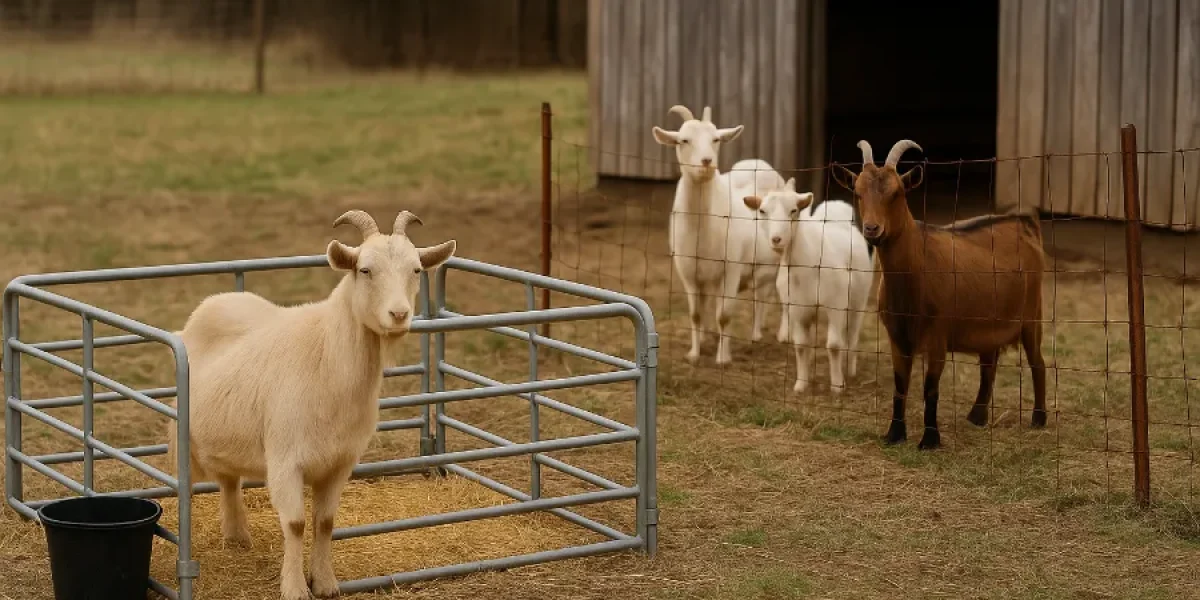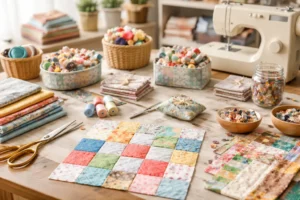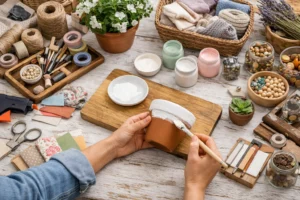Hi, I’m John, and I’ve been raising goats for a few years now. One of the biggest challenges I’ve faced in my goat-farm journey is knowing exactly how to isolate a sick goat without stressing the herd. It’s part of good goat care—when one of your animals falls ill, you want to help it heal while keeping the rest of the herd calm and content.
In this post, I’ll walk you through what I’ve learned about stress management, the realities of goat farming, how goat behavior plays a role, and what to do when you’ve got a sick goat in the pen. My goal is to help you feel confident when that moment comes.
Stress Management
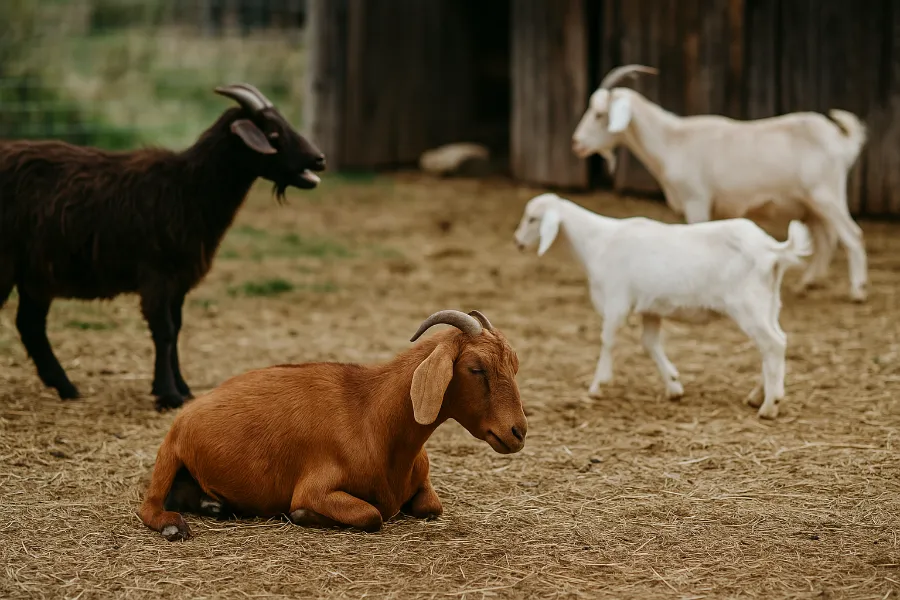
When a goat is under the weather, stress isn’t just an emotional issue—it’s a health issue. Goats in distress eat less, rest poorly, and recover slower. The herd senses the disruption, and suddenly you’ve got bleating, pacing, and maybe even food refusal among your healthy goats.
Here’s how I handle stress management in practice:
- I pick an isolation spot where the sick goat can still see or hear the herd. That keeps her from feeling completely cut off.
- I move her calmly—no rushing, no loud voices. Goats pick up on energy, and calmness matters.
- I stick to the usual feeding and turnout times. The more routine stays the same, the less the herd worries.
- I enrich the isolation pen. A favorite hay net, a browse branch, or even hearing the other goats nearby helps.
- For the rest of the herd, I give them a minute after moving the sick goat—extra hay, a brush, a quiet word. They need reassurance too.
By anchoring the normal while treating the abnormal, you reduce ripple effects of anxiety across your herd.
Goat Farming
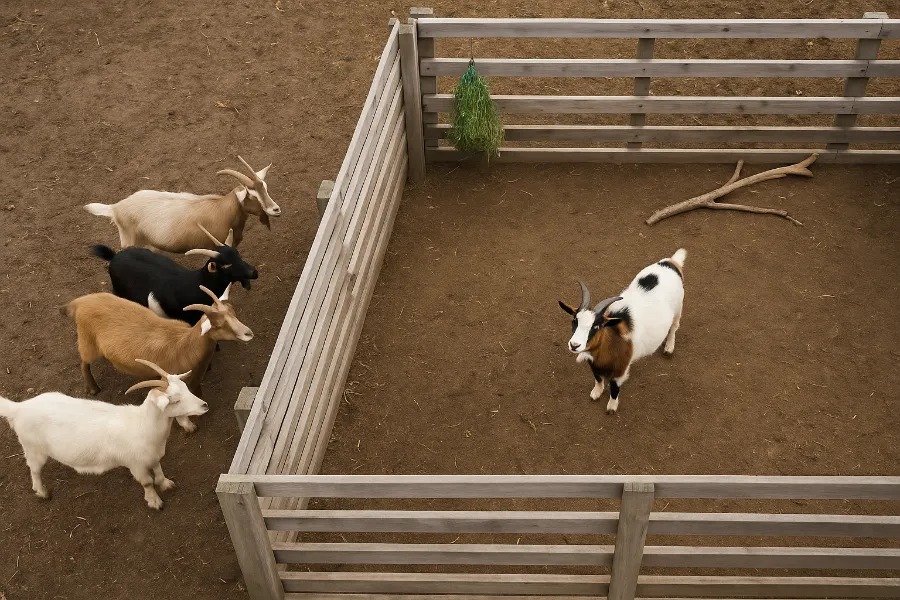
If you’re into goat farming like I am, you know that illness isn’t just one goat’s issue—it’s a herd issue. A single sick goat can jeopardize the health of your livestock, your resources, and your peace of mind. That’s why isolation is a key tool in your management plan.
In goat farming, best practices include:
- Having a dedicated isolation or quarantine pen ready year-round.
- Using separate tools, buckets, and boots for the isolation area.
- Caring for healthy goats first, then tending to the sick goat last to prevent cross-contamination.
On my own farm, I set up a small pen about 10 to 15 feet away from the main herd, with sightlines to the other goats but a solid fence. I keep a “sick goat kit” with a thermometer, gloves, extra bedding, and disinfectant. That way when a goat shows symptoms, I’m ready—not scrambling.
Goat Behavior
Understanding goat behavior is crucial when you’re trying to isolate one without upsetting all of them. Goats are social, hierarchical, and curious. Remove one abruptly and the balance changes. The trick is to make the change as smooth as possible.
Here are some behavior-focused tips:
- Because goats watch each other, the isolated goat will take cues from you. Stay calm and patient.
- The herd will react—expect bleating, gate pacing, or extra movement after one leaves.
- The isolated goat may show signs of anxiety such as refusing feed, pacing, or repeatedly calling.
- When reintegrating, remember that goats know their social rank—return the isolated goat gradually to avoid fights.
If I spot a goat refusing food or lagging behind, I monitor her before she gets obviously sick. Behavior changes are often the first red flag.
Sick Goat
When you finally have a sick goat, here’s what to do:
- Identify signs early. Look for loss of appetite, unusual posture, droopy ears, or separation from the group.
- Move gently to isolation. Avoid crowding or chasing—guide calmly.
- Set up comfort. Provide dry bedding, clean water, familiar feed, and shade from sun or wind.
- Maintain connection. Let her see or hear the herd to reduce loneliness and stress.
- Prioritize hygiene. Use separate feeding utensils, disinfect between pens, and care for the herd first.
- Observe daily. Record temperature, appetite, and manure quality.
- Reintroduce slowly. Keep her beside the herd for a few days before release, and watch for bullying.
By treating the goat carefully and keeping the herd calm, you’ll see faster recovery and less disruption.
Putting It All Together
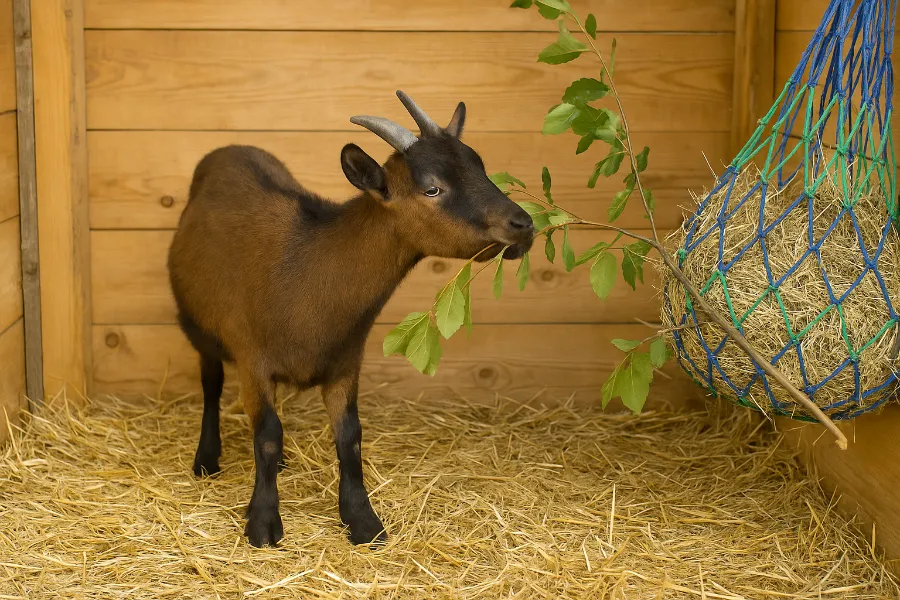
On my own farm, I once had a doe come down with a mild respiratory infection. I isolated her using the steps above. I made sure the rest of the herd got extra social time and consistent feeding. The result? The doe recovered quickly, and the herd stayed calm.
Here’s a simple checklist to keep handy:
- Isolation pen ready with dry bedding and shelter
- Visual or audio contact with herd maintained
- Move sick goat gently and quietly
- Feed healthy herd first; care for the sick goat last
- Separate tools and disinfect between uses
- Observe the sick goat twice daily for temperature and appetite
- Maintain normal routine for the rest of the herd
- Reintegrate gradually once recovered
Why This Matters
When you apply this kind of routine, you’re not just treating one goat—you’re protecting your entire herd, your farm’s rhythm, and your peace of mind. Goat care means more than feed and fence—it means thoughtful management of illness, stress, and recovery.
You’ll notice fewer surprises, stronger goats, and calmer days on the farm. And for anyone who enjoys the rhythm of goat farming, that’s everything.
FAQs
Isolation prevents illness from spreading to the herd while allowing you to monitor and treat the sick goat more effectively. It’s an essential part of responsible goat care.
Keep the goat within sight or sound of the herd, move it calmly, and maintain normal routines to help reduce anxiety.
Pacing, excessive bleating, and refusing to eat are signs of stress. These behaviors mean the goat needs reassurance and consistency.
Keep it isolated until symptoms are gone and treatment is complete. Check with your vet before reintroducing the goat to the herd.
Yes, goats are social animals. Allowing visual or vocal contact helps reduce loneliness during recovery.
Start with side-by-side pens for a few days, then allow supervised contact to prevent dominance fights.
Stick to normal feeding times, stay calm, and provide small enrichments like hay or brushing to maintain stability in the group.

